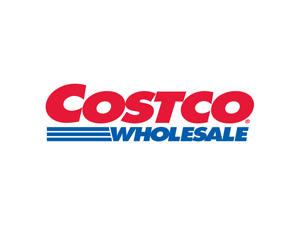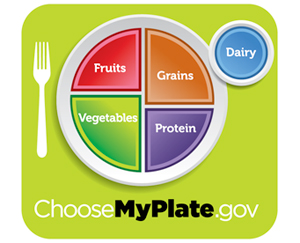MyPlate Your Costco Cart for Better Health
by Erin Palinski-Wade, RD, LDN, CDE
 A balanced meal plan is key to good health and improved blood glucose control. But figuring out just how to balance your diet can be a challenge. That’s why the United States Department of Agriculture (USDA) introduced MyPlate. This tool uses the image of a meal place setting to show the 5 food groups that you need to stay healthy. In order to create a balanced plate, you have to start by having a balanced cart when grocery shopping.
A balanced meal plan is key to good health and improved blood glucose control. But figuring out just how to balance your diet can be a challenge. That’s why the United States Department of Agriculture (USDA) introduced MyPlate. This tool uses the image of a meal place setting to show the 5 food groups that you need to stay healthy. In order to create a balanced plate, you have to start by having a balanced cart when grocery shopping.
Research has shown that dividing your cart can help you make healthier food choices. One study found that when shoppers were provided with a divided shopping cart, they bought double the amount of fruits and vegetables! A “MyPlate Your Cart” approach, either with a physical division or by using your imagination to divide the cart, is an easy tool you can use to help you buy healthier foods.
 As a MyPlate partner, Daisy Brand Cottage Cheese developed the “MyPlate Your Cart” strategy to help promote well-balanced grocery shopping for a healthier plate. The next time you are shopping at Costco, think about how the MyPlate principles can be applied to your cart. Imagine a line that divides your cart into sections for vegetables, fruits, whole grains, lean proteins, and low-fat dairy products. Then, as you fill your cart, make sure you are choosing foods that will fall into each of these categories.
As a MyPlate partner, Daisy Brand Cottage Cheese developed the “MyPlate Your Cart” strategy to help promote well-balanced grocery shopping for a healthier plate. The next time you are shopping at Costco, think about how the MyPlate principles can be applied to your cart. Imagine a line that divides your cart into sections for vegetables, fruits, whole grains, lean proteins, and low-fat dairy products. Then, as you fill your cart, make sure you are choosing foods that will fall into each of these categories.
Vegetables & Fruits
When you look at the MyPlate image, it shows that one half of your plate should be filled with vegetables and fruits. Use the same strategy when filling your cart. Fill half of your grocery cart with fruits and vegetables. When choosing produce, think about filling your cart with a rainbow of colors. This section can include:
- Fresh fruits and vegetables
- Frozen vegetables (with no added sauces)
- Frozen fruit (with no added sugars)
- Canned fruits (packed in water or 100% juice)
- Canned vegetables (choose “reduced sodium” or “no salt added”)
- 100% fruit juice
- Low-sodium vegetable juice
Whole Grains
Whole grains are a great source of fiber, nutrients, and carbohydrates for energy. When choosing grains, make sure to check the ingredient list on product labels. You want to see the words “whole” or “whole grain” before the grain ingredient name. If you do not see this, the grain is most likely refined. Refined grains can spike blood glucose levels more than whole grains, so try to avoid these. This section can include:
- 100% whole grain bread
- 100% whole grain pasta
- Brown rice
- Quinoa
- Old fashioned oatmeal
- Popcorn (air popped or low-fat)
Lean Protein
Protein helps keep you full throughout the day. In addition, you need enough protein to build and maintain muscle. When you choose proteins, variety is key. This section can include:
- Seafood (fresh or frozen fish, shellfish)
- Lean poultry (choose mostly white meat over dark meat)
- Lean meats (90% lean or more)
- Beans and lentils
- Eggs
- Nuts and seeds
Low-Fat Dairy
Dairy is a great way to add important nutrients, such as calcium and magnesium, into your meal plan. In addition, some dairy products contain a good amount of protein. If your healthcare provider thinks it is best for you, you should choose skim or low-fat dairy options. Good sources include:
- Low-fat or skim milk
- Low-fat cottage cheese
- Low-fat yogurt
- Low-fat cheese
The next time you are shopping at Costco, keep these principles in mind for a healthier cart and a healthier plate.
Visit cdiabetes.com/guide to get a free “Costco Diabetes and Heart-Healthy Shopping Guide” eBook.

